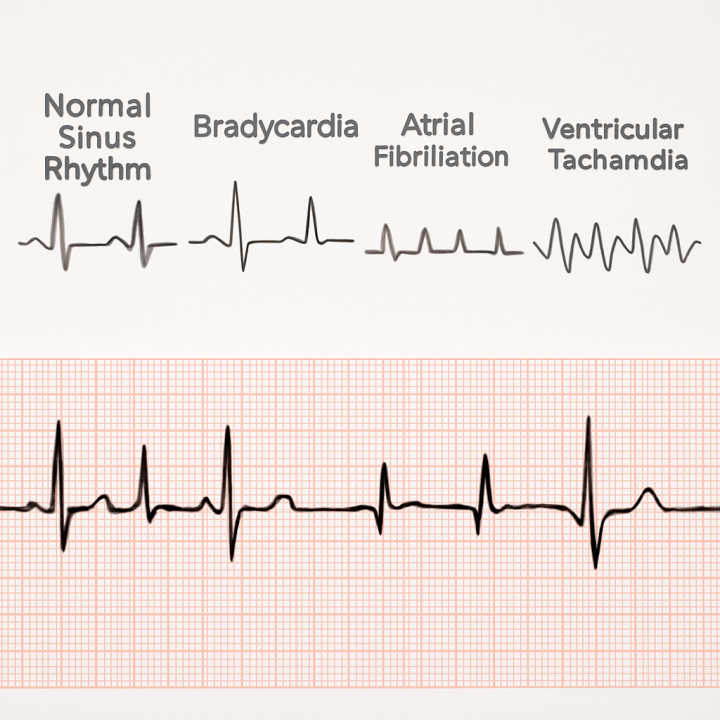Understanding cardiac rhythms is essential for anyone in healthcare, especially those involved in emergency or critical care settings. While the idea of interpreting EKG strips may seem intimidating at first, with the right foundation, anyone can grasp the basics and build confidence.
What Are Cardiac Rhythms?
Cardiac rhythms are the patterns of electrical activity generated by the heart. These patterns are recorded and analyzed using an electrocardiogram (EKG or ECG). By studying these rhythms, healthcare providers can determine how well the heart is functioning and detect potentially life-threatening abnormalities.
Key Rhythms Every Beginner Should Learn
- Normal Sinus Rhythm (NSR)
- The gold standard of a healthy heart rhythm.
- Regular rate (60–100 bpm), uniform P waves, and a consistent PR interval.
- Bradycardia
- A slower-than-normal heart rate (less than 60 bpm).
- Can be benign or a sign of serious conduction issues.
- Tachycardia
- A fast heart rate (over 100 bpm).
- May be caused by stress, fever, or more serious conditions like SVT (Supraventricular Tachycardia).
- Atrial Fibrillation (AFib)
- Irregularly irregular rhythm with no distinct P waves.
- Increases risk of stroke and requires close monitoring.
- Ventricular Tachycardia (VT)
- A fast, wide-complex rhythm originating in the ventricles.
- Often a precursor to cardiac arrest.
- Ventricular Fibrillation (VFib)
- Chaotic, disorganized rhythm; the heart isn’t pumping effectively.
- Requires immediate defibrillation.
- Asystole
- Flatline. No electrical activity.
- A non-shockable rhythm and medical emergency.
Tips for Learning Cardiac Rhythms
- Start with the Basics: Learn to identify the P wave, QRS complex, and T wave.
- Understand the Intervals: Know how to measure the PR interval, QRS duration, and QT interval.
- Practice Regularly: Use flashcards, rhythm quizzes, and simulation tools.
- Think Clinically: Always connect what you see on the strip with what the patient is experiencing.
- Use Mnemonics: Devices like “If it’s wide and fast, think VT” help you remember patterns in emergencies.
Final Thoughts
Cardiac rhythm interpretation is not just about recognizing patterns—it’s about making decisions that can save lives. With regular practice and real-world application, what once seemed mysterious will become second nature. Whether you’re a nursing student, new EMT, or just refreshing your skills, start small, stay consistent, and remember: every expert was once a beginner.


